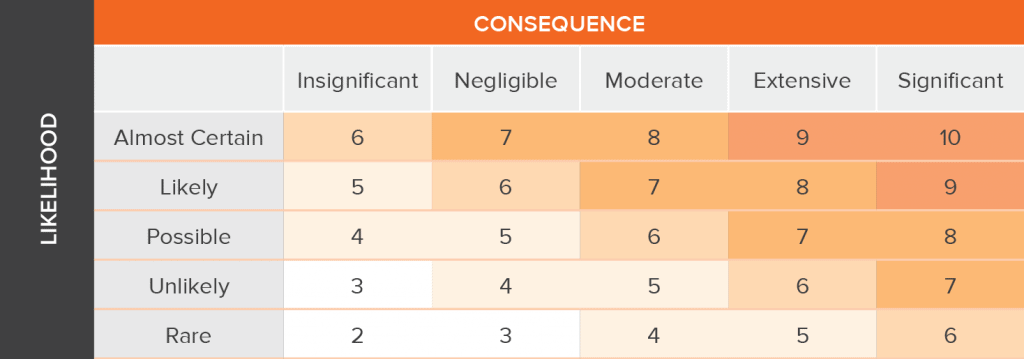4 Stages of Building Defects and Maintenance Controls
Building defects and maintenance controls are recognised as an integral part of good governance. They are an interactive process that can be used by strata executive committees to mitigate and remove risks.
This guide has been developed to support strata executive committees. It will allow them to prioritise defects and significant maintenance issues, and set aside funding to take urgent remedial action for potentially major/ catastrophic building defects.
There are 4 main stages of defects and maintenance controls:
- Identification
- Assessment
- Risk control
- Documenting the process
Step 1 – Identification
Defects and maintenance issues have the potential to cause further damage to a building or result in a significant illness or injury. It is imperative that the strata executive committee does not wait for an incident or accident to occur before acting.
The strata executive committee should check their building for defects. If required, they should engage the services of an expert such as a building consultant or other contractor who will prepare a report listing all defects and maintenance issues within the building.
The report may reveal issues that were overlooked in the original design of the buildings, or that have manifested themselves over the intervening years.
Step 2 – Assessment
Analyse the potential impact of all defects and maintenance issues. Where possible, identify contributing factors.
Evaluate the severity or impact of known and potential defects and maintenance issues, and the probability or likelihood that they will occur, to allocate a rating. This will ensure that a higher priority is given to matters:
- that are dangerous
- which have a high probability to cause injury or harm
- where impact of injury/harm will be significant
Rating Table
A simple risk matrix, which cross references likelihood and consequences, will enable defects and maintenance issues to be assessed and characterised as one of the following:
L – Low Priority – rating 2-5
M – Medium Priority – rating 6
H* – High Priority – rating 7-8
C* – Critical Priority – rating 9-10
*H and C priority items fall under the definition of a “major defect” as defined by the Home Building Act 1989 (NSW): http://www.legislation.nsw.gov.au/#/view/act/1989/147/part2c/sec18e.
Risk Assessment Tool
The following easy-to-use risk assessment tool* that cross references likelihood and consequences will enable the strata executive committee to assess and prioritise defects and maintenance issues.
 *Ref HB 436:2004, Risk Management Guidelines Companion to AS/NZS 4360:2004
*Ref HB 436:2004, Risk Management Guidelines Companion to AS/NZS 4360:2004
Step 3 – Control
It may not be possible to fix every building defect or maintenance issue immediately as finance may be a constraint and require a special levy, but risks can be mitigated.
An action plan will prioritise matters and identify high risk or significant defects or maintenance issues to be mitigated or removed.
CASE STUDY
Loose Balcony Rails
A strata complex comprising residential units has defective balcony rails that range in height up to 10m. There is an imminent danger that they will come away from the main structure. It has been assessed that balcony rails will need to be replaced in each residential unit. The replacement cost is prohibitive and will require a special levy. In addition, work required to remove the defects will take approximately six months.
Using the Rating Table and the Risk Assessment Tool in Step 2, the assessment identified that the ‘Likelihood’ of the balcony rails coming away from the structure was ‘Almost Certain’ and the potential ‘Consequences’, in this case serious injury, were ‘Significant’:
Rating – 10 (Critical)
Likelihood – Almost Certain
Consequence – Significant
To mitigate the risk while waiting on full replacement of balconies, the strata executive committee informed unit owners of the inherent risk and requested that they restrict all access* to their balconies.
*Restricting access to the balconies is problematic as it is not possible to enforce 100% compliance.
The above case study demonstrates identification and assessment of a building defect, introductions of risk mitigation strategies (restricting access to the balconies), and controls put in place to remove the risk (full replacement of balconies).
The final step is to ensure that the strata executive committee is protected, by ensuring that they have the right insurance in place.
Step 4 – Documenting the process
Adequate record keeping of the building defect and maintenance issue risk controls will note the process that was undertaken, document associated risks and control measures implemented, and detail monitoring and review of the effectiveness of the controls.
This documentation can be provided as evidence of the controls in place when the strata executive committee is negotiating their insurance cover and premium.
This page’s content was last updated on 8 Jun 2020.
Download Resources
Download the “4 Stages of Building Defects and Maintenance Controls” PDF below.
Stay ahead with our strata insurance updates!

1. Ensure the site is safe
